One of my favorite Mary Oliver poems includes the line “Joy is not made to be a crumb.” I think about that line a lot, and it’s a poem that I read frequently to begin and end my yoga classes — it’s a reminder to self, more than anything, that even in the darkest times, finding joy is electric, it’s powerful, and it’s meant to be big.
I’ve been struggling with my depression for more than 20 months straight. The pandemic has altered all of our minds, and for those of us with a mental illness, it’s made the hardest parts of that experience really grow. There are moments, days, weeks, where things look better and most of my normal activities feel fine enough. But those come with the creeping reality in the back of my head that shortly, it won’t feel fine anymore. That I’ll struggle to get out of bed. That any and all activities that seemed to bring a sense of joy or wonder will soon cease to do just that, and I’ll be simply moving my body through the motions again, hoping to get back to that place of feeling fine. No amount of medication or therapy can change the reality we’re in, and this goes so much more so for those who are from marginalized backgrounds: on top of the physical pandemic, there’s the relentless pandemics of racism, homophobia, and nonstop news cycle fueling worry.
The pandemic has amplified things that were already hard, and given that the systemic structures are slow to change, if changing at all, the reality is even when COVID is under control, the social pandemics will continue — and so will begin a massive process of grief and unpacking years of trauma, layer upon layer.
Even in my own darkest hours, though, I come back to the idea of joy not being a crumb. Those moments where I want to disappear are the ones where I push myself best as I can to find a sense of wonder or curiosity. It can, and often is, a tiny and inconsequential thing, but cultivating even the silliest sense of awe helps ground me into something beyond myself.
Science backs up this experience. As David P. Fessell and Karen Reivich explore in their Harvard Business Review piece “Why You Need To Protect Your Sense of Wonder — Especially Now,” every opportunity you can take to find awe, be it through a nature walk or a fun YouTube video, helps ease the mental load. It does not cure anything, of course, but ease as a goal is more than worthy in and of itself. Find those places of joy and wonder, and you’ll be able to breathe more freely.
As we enter the second winter of this global pandemic, with daylight quickly receding and cold weather settling in, forcing many of us back inside after doing all we can to safely navigate outdoor activities during favorable months, finding awe, wonder, and joy will become essential survival techniques.
Let’s take a look at some great books that can help you find wonder, awe, and joy and help you feel connected to something bigger as we become more and more isolated. As always, if you’re experiencing mental health issues at all, do what you can to get help. While these books will help you find meaning, they aren’t sustainable method for managing mental illness. They can be a tool in that toolbox, but the more you’ve got to work with, be it medication, talk therapy, or a combination of those and other methods, the better you’ll be able “to be alive, on this fresh morning, in the broken world.”
Books To Inspire Joy, Wonder, and Awe
All Along You Were Blooming: Thoughts for Boundless Living by Morgan Harper Nichols
What I love about Morgan Harper Nichols is probably the reason she’s developed such a huge following on Instagram: she offers a breath of fresh air and insight, but doesn’t do so in a way that downplays or ignores real pain and challenge. She is an autistic woman of color, and her experiences absolutely shape her astute insight.
This is a poetry collection about small moments of wonder and light, with plenty of space for just taking a deep breath. It’s beautifully illustrated to boot.
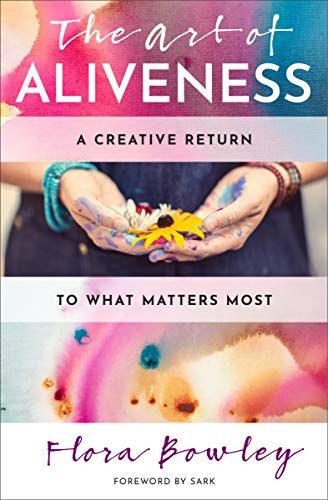
The Art of Aliveness: A Creative Return to What Matters Most by Flora S. Bowley
Something that seems to be defining the pandemic is understanding what matters most to us as individuals. There’s the great resignation, as more and more people understand that their lives are far too short to be spent in a job they don’t find value doing. Among and beyond that demographic, though, are those who have worked to find new hobbies and passions.
Bowley’s book is about returning to creativity, and more specifically, it’s about finding a sense of aliveness in what we do and what we care most deeply about. Again, this isn’t a book about moving beyond feelings of sadness or despair but using those as tools for finding joy and meaning. The book has a forward by SARK, whose work had tremendous impact on so many modern folks like Bowley (and others in this post).
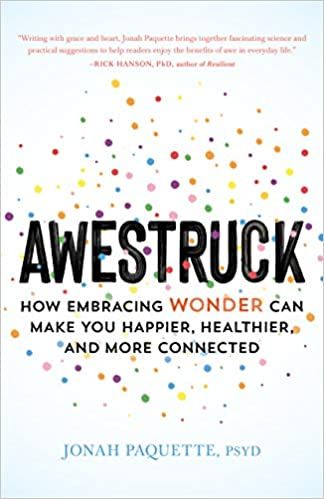
Awestruck: How Embracing Wonder Can Make You Happier, Healthier, and More Connected by Jonah Paquette
If you’re curious about awe as an emotional experience, Paquette’s book is a great choice. In addition to offering a look at the science of awe and wonder, included are a number of practices to tap into them. It’s an accessible pop psychology book with plenty of meat and opportunity to work wonder into your life.
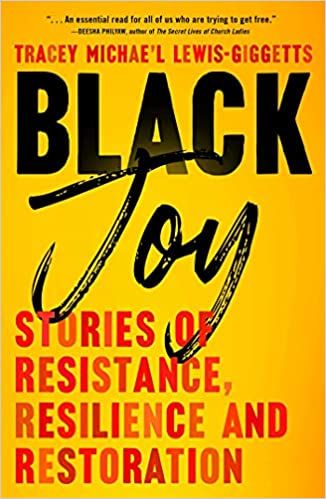
Black Joy: Stories of Resistance, Resilience, and Restoration by Tracey M Lewis-Giggetts (Feb 1, 2022)
In June 2020, Lewis-Giggetts wrote an essay for The Washington Post about joy as Black resistance that not only went viral but also affirmed her belief in the power of Black joy as a tool of power and of healing. This book is an extension from that essay, offering a collection of thoughts on how joy in the Black community is a deep well and resource, with a goal to both recharge and reignite passion for Black readers.
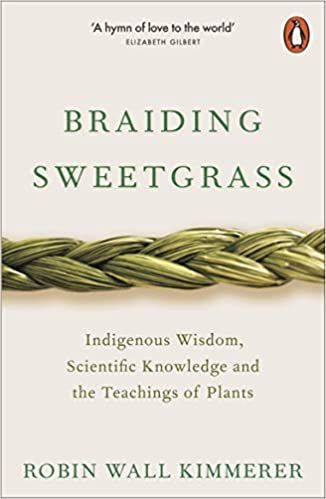
Braiding Sweetgrass by Robin Wall Kimmerer
If I could name a single book that’s changed my relationship with nature and specifically, my fascination and appreciation for every season and its uniqueness, it’s this one. Kimmerer is a Native scientist, and her book explores nature both through the lens of biology and through the lens of Native knowledge and wisdom. It will open up your eyes to entirely new ways of seeing the world and more, new ways of experiencing it. I’ll never take for granted how autumn’s wave of purple and yellow flowers are purposeful works of nature meant to be seen with wonder and awe — and how Native traditions have used this change in seasonal colors to appreciate the land in rich ways.
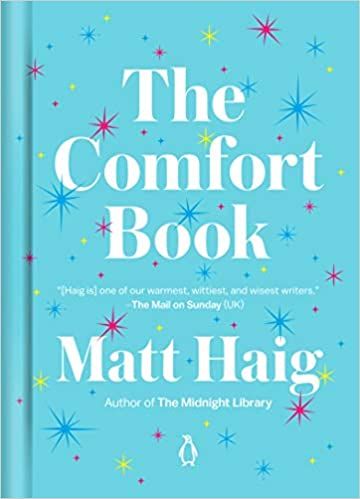
The Comfort Book by Matt Haig
Haig nails it when he writes that we discover what comforts us most when we’re at our lowest, and this collection of art, lists, and essays seeks to offer a warm hug for readers who are desperate for just that. The book weaves in history and science, as well as a broad, global scope, to present to readers a place to turn to again and again when in need of joy, hope, and comfort.
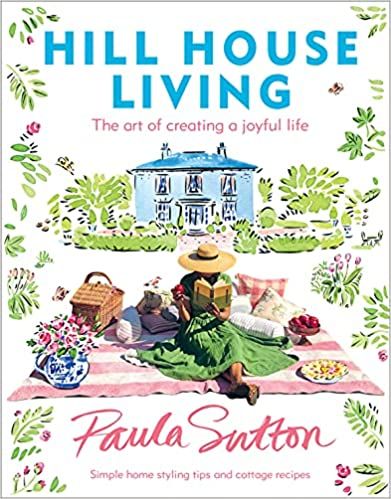
Hill House Living: The Art of Creating a Joyful Life by Paula Sutton
A big realization many had during lockdown and through the pandemic more broadly is how much one’s home impacts their well-being. A home should be a place of comfort, retreat, and safety — something that not every person has, which, with that knowledge, only makes the privilege of having such a space become one that can be appreciated in a different way.
Sutton is a British fashion influencer, with a major Instagram following, and her book explores the cottage home life, both through gorgeous photos and tips, tricks, and ideas for making one’s home space as joyful and wonder-filled as possible.
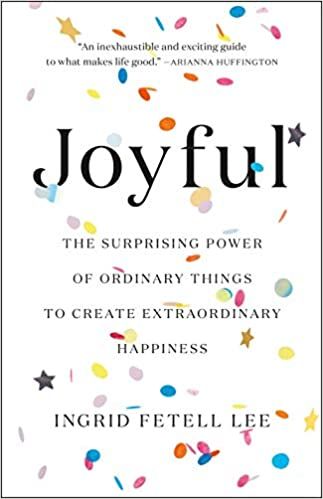
Joyful by Ingrid Fetell Lee
I don’t exaggerate that this book led me to change things in my life immediately after I finished it. Even though I believe in the power of inner work to find joy — meditation, journaling, moving my body — there’s a lot to also be said for finding joy outside ourselves, and this book is about finding that external joy. Lee offers the neuroscience behind why looking at our surroundings impacts our joy and the big and small things we can do to experience it. For me, it was changing the paint color in a couple of rooms in my house that I didn’t like, and almost two years later, I’m still finding joy in those colors when I see them.
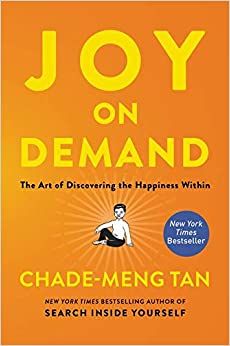
Joy on Demand: The Art of Discovering the Happiness Within by Chade-Meng Tan
Even as a trained yoga teacher, I didn’t believe I could meditate. But when I learned just how many different forms meditation takes — it’s not all what you’ve seen depicted in popular media — it became a grounding and empowering practice for me across a number of different shapes. Tan’s book is about how meditation can be done in seconds and offers practical tools for accessing the joy within oneself. Though this book plays into some of the same ideas of what “proper” meditation is as a starting point (i.e. something for enlightenment done by people with hours to do nothing, which…it is not), it’s included because it does break down those ideas into digestible and useful practices for today’s world.
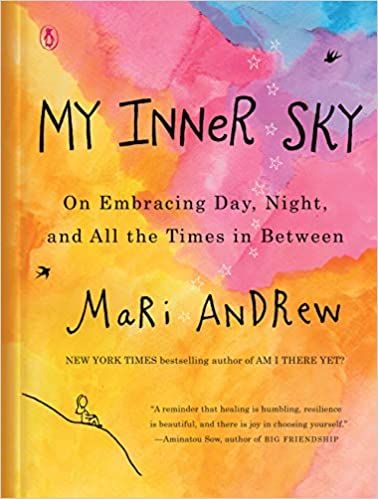
My Inner Sky: On Embracing Day, Night, and All the Times in Between by Mari Andrews
Andrews is one of my favorite Instagram follows, and her book mirrors so much of what I love about her feed. It’s a collection of wisdom and thoughts paired with her own beautiful art. Like so many of the other titles in this list, there’s not a focus here on thinking positive as a solution to challenge. Instead, the book is about embracing the dark emotions in order to better understand and feel those of joy and wonder.
We’re not machines, nor should we be led to believe toxic positivity is the answer. To find radiance, we have to acknowledge the darkness, too, and Andrews’s book does just that.
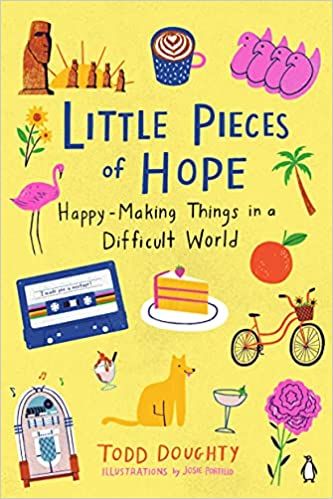
Little Pieces of Hope: Happy-Making Things in a Difficult World by Todd Doughty and Josie Portillo
At the onset of the pandemic, Doughty sat down and made a list of all the little things which made him happy. From there, this book was born.
Spanning essays, lists, prompts, playlists, and delightful illustrations by Portillo, this happy book is about reconnecting to the small sparks that bring you joy in the every day. The cover alone makes me smile.

A Walk Around the Block by Spike Carlsen
I can’t count the number of books or podcasts or teachers I’ve heard say that going for a walk around the block can be one of the most profound things you do in a day. And it’s true — when you take the time to wander the space in which you reside, you notice so much about your world that it’s hard not to feel connection, wonder, and joy (this, of course, is not universal for all of the reasons mentioned earlier about privilege). For me, walking like this is in itself a meditation, and Carlsen’s book dives into the ways in which noticing, feeling, and sensing the world within a block of where you live can be wondrous and joyful. What can you learn about things by just noticing them and then seeking out information to learn or discover more?
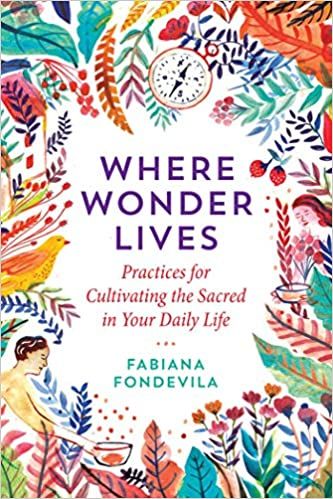
Where Wonder Lives by Fabiana Fondevila
Wonder and awe help us feel more satisfied with our lives, and that’s science. Fondevila offers a wealth of wonder activities for engaging in the world and cultivating those experiences. From big to small, the book offers some expected ideas, as well as plenty that will in and of themselves ignite curiosity.
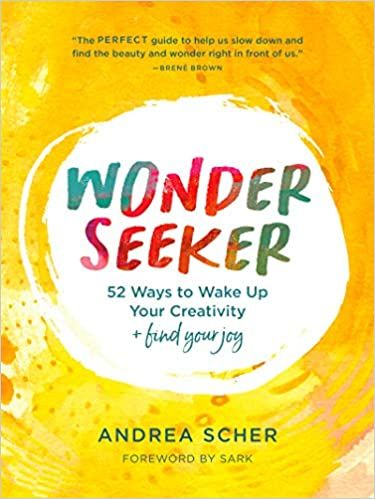
Wonder Seeker: 52 Ways to Wake Up Your Creativity and Find Your Joy by Andrea Scher
I’ve taken a number of classes with Scher, and it’s from her where the power of wonder really cemented for me. Wonder can be so simple and so profound, and I’m eager to pick up her book about the power of seeking those experiences out. The full-color book has prompts and activities for purposefully engaging in wonder, from paint chip poetry to cloud bingo and to ways to offer wonder for others unexpectedly.
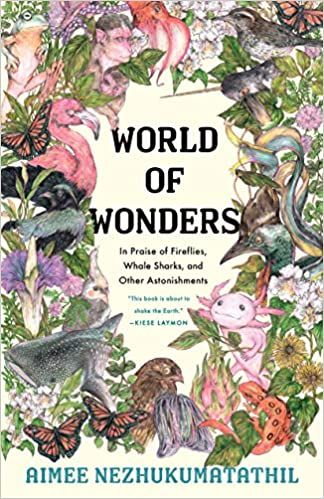
World of Wonders: In Praise of Fireflies, Whale Sharks, and Other Astonishments by Aimee Nezhukumatathil
This book was named a best of for a reason: it’s a reminder to look around the natural world and allow yourself space and permission to be astonished. Nezhukumatathil offers up essays about the ways nature can teach us so much, as well as inspire our every day being. If you want a warm, cozy read, this will be right up your alley, and the illustrations by Fumi Nakamura only make it so much more wondrous.
Find space in the every day to let yourself wonder, to explore, and to expand your joy. It doesn’t matter what those things look like — what matters is you allow yourself to not let it be but a crumb, especially during the darkest, most challenging times.
Need more? Read your way into books that celebrate Black joy, as well as how to rekindle your bookish joy.
Source : Books About Wonder and Sparking Joy in Dark Seasons









